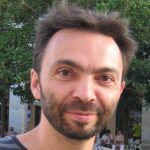Link to Pubmed [PMID] – 8182739
J. Mol. Biol. 1994 May;238(5):643-8
We have replaced the hexanucleotide corresponding to the “-10” region of malPp, a positively regulated promoter from Escherichia coli, by random nucleotide sequences and isolated 48 different variants that were as active as the wild-type promoter. Analysis of the nucleotide sequence of their “-10” region strongly suggests that the nature of the nucleotide present at three positions plays a crucial role: 46 of the 48 malPp variants contained C or T at position -12, A at position -11 and T at position -7. The nucleotide composition at the three other positions seems to be much more flexible. The features of these “-10” regions are similar to those of the constitutive promoters, but some significant differences are noticeable and will be discussed. In contrast to other positively regulated promoters, none of the various “-10” regions, including the consensus sequence TATAAT, led to a constitutive promoter.
